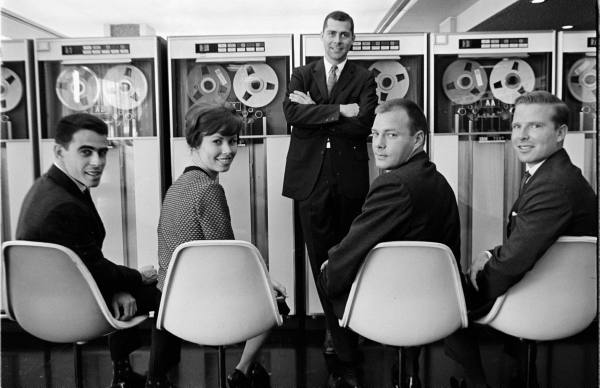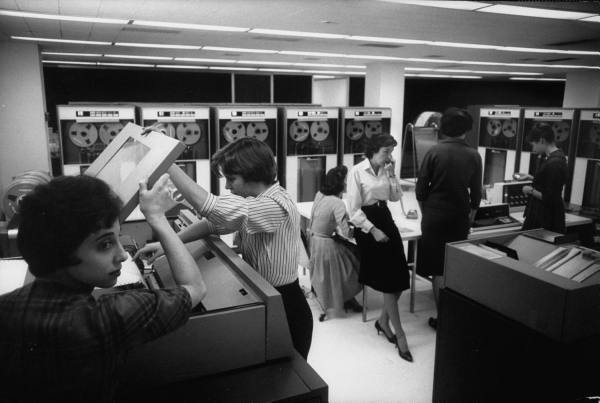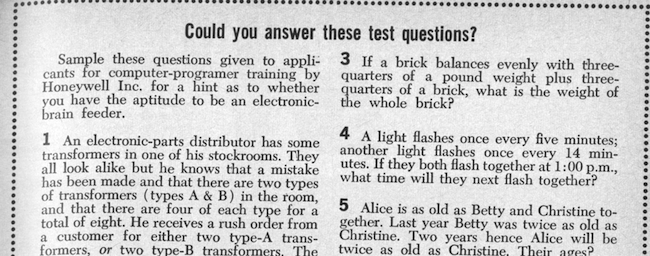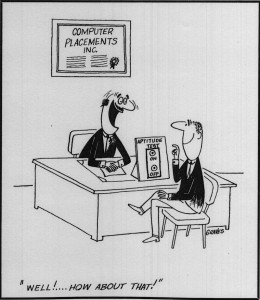A brief excerpt from The Computer Boys Take Over has been published on Womens e-News.
Tag Archives: programmers
The IBM Story
In preparing a recent talk, I came across this image from a 1962 article in Life Magazine on IBM. It captures nicely the stylish enthusiasm and modernist appeal of the computer professions that are too often lost in the focus on eccentric and scruffy hacker-types. Computing in the 1960s was the place to be.
Here is another of my favorites, this from 1961, featuring an computer room full of female computer operators:
The Life Magazine archive in Google images is an excellent source for images of computer people.
History of UNIVAC at ArsTechnica
The nerd news website ArsTechnica recently published an article by Mathew Lasar on the history of the UNIVAC I computer. It’s a nice little piece that draws heavily on Kurt Beyer’s excellent recent biography of Grace Hopper and Paul Ceruzzi’s classic History of Modern Computing (one of the earliest of the books published as part of MIT Press’ History of Computing series, of which The Computer Boys Take Over is the latest entry).
Lasar highlights a issue relevant to the history of computer programming that I had previously not encountered (or at least noticed). In discussing the female programmers that Grace Hopper had cultivated at the Eckert Mauchly Computer Company, he notes that after the sale of EMCC to Remington Rand, many of these women left to pursue other opportunities, largely because of the lack of respect they felt in their new big-corporation environment:
“On top of that, new management did not sympathize with EMCC’s female programmers, among them Grace Hopper, who by 1952 had written the UNIVAC’s first software compiler. ‘There were not the same opportunities for women in larger corporations like Remington Rand,’ she later reflected. ‘They were older companies, and the jobs had been stereotyped.'”
During the labor crisis in programming that emerged in the 1950s, these women had plenty of other opportunities, Lasar argues, and many departed for other, more enlightened employers. Read the whole article. A nice piece, and it is good to see this history get rediscovered for a contemporary audience (particularly in a venue as popular as ArsTechnica).
Programmer aptitude?
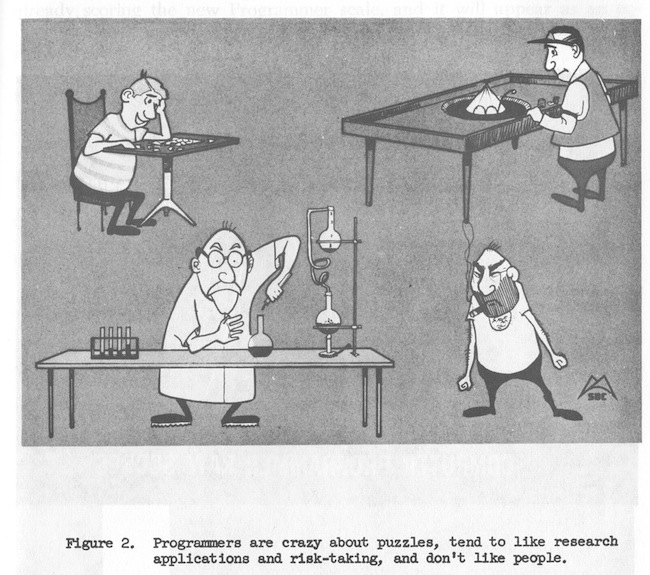
The 1960s were characterized by a perpetual “crisis” in the supply of computer programmers. The computer industry was expanding rapidly; the significance of software was becoming ever more apparent; and good programmers were hard to find. The central assumption at the time was that programming ability was an innate rather than a learned ability, something to be identified rather than instilled. Good programming was believed to be dependent on uniquely qualified individuals, and that what defined these uniquely individuals was some indescribable, impalpable quality — a “twinkle in the eye,” an “indefinable enthusiasm,” or what one interviewer described as “the programming bug that meant … we’re going to take a chance on him despite his background.”
In order to identify the members of the special breed of people who might make for a good programmer, many firms turned to aptitude testing. Many of these tests emphasized logical or mathematical puzzles: “Creativity is a major attribute of technically oriented people,” suggested one advocated of such testing. “Look for those who like intellectual challenge rather than interpersonal relations or managerial decision-making. Look for the chess player, the solver of mathematical puzzles.”
The most popular of these aptitude tests was the IBM Programmer Aptitude Test (PAT). By 1962 an estimated eighty percent of all businesses used some form of aptitude test when hiring programmers, and half of these used the IBM PAT.
Although the use of such tests was popular (see Chapter 3, Chess-players, Music-lovers, and Mathematicians), the were also widely criticized. The focus on mathematical trivia, logic puzzles, and word games, for example, did not allow for any more nuanced or meaningful or context-specific problem solving. By the late 1960s, the widespread use of such tests had become something of a joke, as this Datamation editorial cartoon illustrates.
So why did these puzzle tests continue to be used (including to this day)? In part, despite their flaws, they were the best (only?) tool available for processing large pools of programmer candidates. In the absence of some shared understanding of what made a good programmer good, they were at least some quantifiable measure of … something.
Help Wanted!
One of the most significant developments in the computer industry during the 1960s was the perceived shortage of skilled “computer people”:
In 1945 there were no computer programmers, professional or otherwise; by 1967 industry observers were warning that although there were at least a hundred thousand programmers working in the United States, there was an immediate need for at least fifty thousand more. “Competition for programmers,” declared a contemporary article in Fortune magazine, “has driven salaries up so fast that programming has become probably the country’s highest paid technological occupation . . . Even so, some companies can’t find experienced programmers at any price.”1Gene Bylinsky, “Help Wanted: 50,000 Programmers,” Fortune 75, no. 3 (1967): 445–556.
The image is from an article in Popular Science from two years earlier. The programmer personnel crisis is the first of the many “software crises” that were proclaimed over the next several decades. The first published use of the phrase “software crisis” appears in a 1966 Business Week article on the “shortage of programmers.”2“Software Gap: A Growing Crisis for Computers,” Business Week, November 5, 1966, 127.
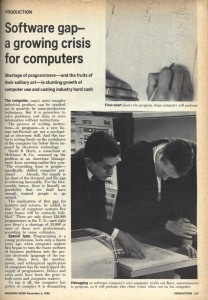
- 1Gene Bylinsky, “Help Wanted: 50,000 Programmers,” Fortune 75, no. 3 (1967): 445–556.
- 2“Software Gap: A Growing Crisis for Computers,” Business Week, November 5, 1966, 127.
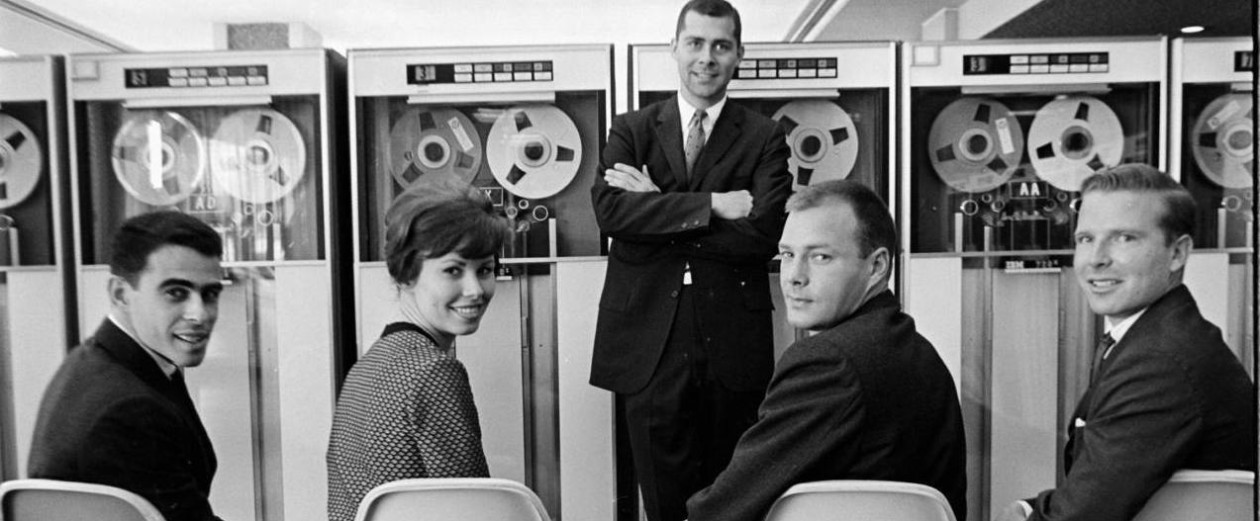
 Follow
Follow